In a world where gifts often lack meaning and individuality, Indian shawls stand out as a timeless, graceful, and thoughtful choice. Whether it’s a birthday, a wedding, a farewell, or a corporate gesture, gifting a beautifully woven Indian shawl is more than just a material exchange—it’s a celebration of culture, warmth, and tradition. But what makes Indian shawls the perfect gift? Let’s unwrap the elegance behind this enduring token of affection.
1. A Touch of Tradition with a Modern Appeal

In an era where fast fashion dominates and trends change with every season, few wardrobe pieces manage to stay relevant across generations, cultures, and occasions. Indian shawls, however, defy this cycle. Steeped in rich history and intricate craftsmanship, yet effortlessly adaptable to contemporary styles, Indian shawls embody the perfect fusion of tradition and modern appeal.
This unique blend is precisely what makes them cherished heirlooms, fashion statements, and thoughtful gifts—all in one.
The Historical Weave: Where Tradition Begins
The tradition of Indian shawls dates back several centuries. Historical records mention shawls being woven in Kashmir as early as the 3rd century BCE. Over time, different regions developed their own distinctive shawl styles:
- Kashmiri Pashmina: Made from the soft undercoat of Himalayan goats, this shawl was once worn by Mughal royalty and European aristocrats.
- Kani Shawls: Handwoven with wooden needles, each Kani shawl can take months to complete and often depicts elaborate Mughal-inspired patterns.
- Jamdani and Kantha from Bengal: These use delicate embroidery and motifs that reflect everyday life and folklore.
- Kullu and Kinnauri Shawls: Known for bold geometric patterns and earthy colors, these woolen shawls reflect the culture of Himachal Pradesh.
- Phulkari Shawls: Originating in Punjab, these are adorned with vibrant floral embroidery and worn during festive occasions.
These aren’t just garments—they’re living traditions, often passed down as heirlooms and associated with rites of passage like weddings and milestones.
The Contemporary Turn: Shawls as Modern Essentials
What makes Indian shawls especially remarkable is their ability to evolve with time. Today, designers and fashion enthusiasts are giving these traditional wraps a fresh lease on life:
1. Fusion Styling
Shawls are no longer restricted to ethnic occasions. A handwoven wool shawl thrown over a trench coat or a silk embroidered shawl paired with denim and boots has become a high-fashion statement. Stylists now use shawls as scarves, wraps, stoles, and even as makeshift belts or turbans.
2. Minimalist Adaptations
Many modern Indian shawls now feature subtler patterns and muted tones, catering to minimalistic aesthetics. Brands are reimagining age-old designs with contemporary palettes—think off-whites, greys, and pastels with simple borders instead of the traditional heavy zari.
3. Gender-Inclusive Fashion
Shawls have transitioned into unisex accessories. Men wear them as part of their winter formals, wedding attire, or spiritual garments. With tailored cuts and versatile textures, shawls have seamlessly integrated into men’s wardrobes as symbols of refinement.
Why This Fusion Works
This seamless mix of old and new is not accidental. It works because:
- Cultural identity meets comfort and practicality.
- Artisanal excellence is appreciated more than ever in the era of mass production.
- The global fashion scene values storytelling, and every Indian shawl tells a story—of the weaver, the region, the heritage.
Shawls remind wearers of their roots while letting them stand tall in contemporary settings. They don’t demand change; they adapt to it gracefully.
Shawls in Popular Culture
Even in global runways and cinema, Indian shawls have found their space. From being draped over characters in period dramas to gracing international fashion weeks under luxury labels, these woven marvels have earned global admiration. Celebrities often sport shawls during red carpet events or spiritual travels to India, elevating their status from ethnic wear to luxury accessories.
Final Wrap: A Living Dialogue
To wear an Indian shawl today is to participate in a living dialogue—between past and present, between craft and commerce, between memory and modernity. It’s an affirmation that style need not abandon substance, and that heritage can not only coexist with innovation but enhance it.
So whether you’re styling a Pashmina over an evening gown or draping a Kantha over a casual kurta, you’re not just dressing up—you’re carrying a tradition forward with elegance and intent.
2. Warmth, Literally and Emotionally
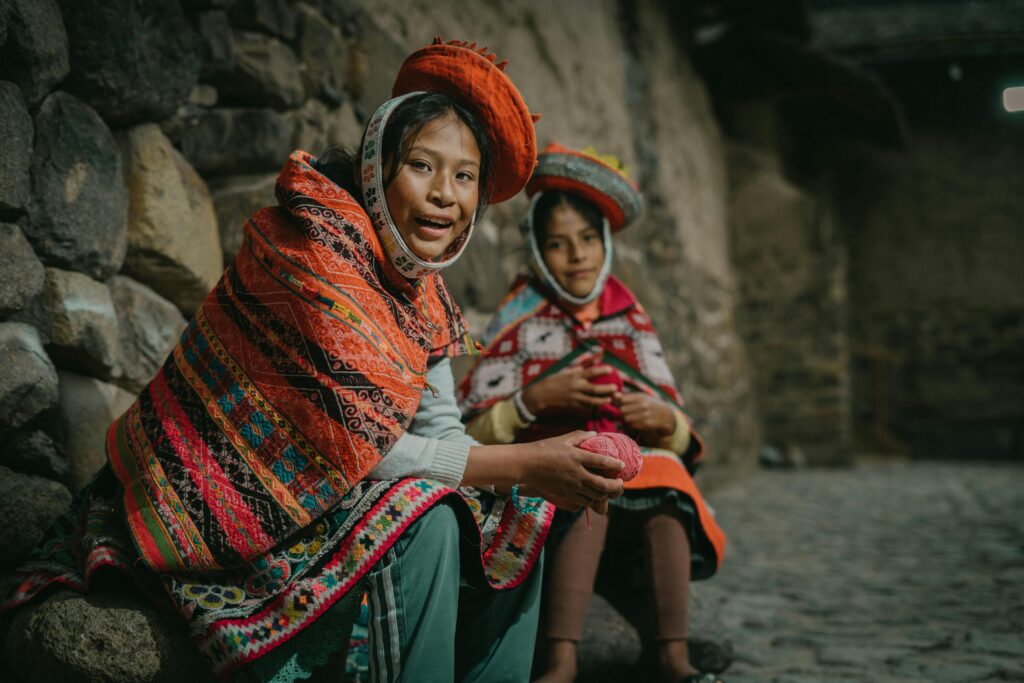
Gifts speak a language of their own. Some whisper luxury, others shout status—but only a few wrap the receiver in comfort, care, and cultural richness all at once. Indian shawls do exactly that. Their unmatched ability to provide literal warmth and emotional resonance is what sets them apart from the average gift.
To gift a shawl is not just to give a fabric—it is to extend a feeling, a gesture woven with memory, sentiment, and legacy. Here’s why shawls embody warmth in every sense of the word.
Literal Warmth: Functional Elegance
At their core, shawls are meant to protect and insulate. And Indian shawls do this with refined beauty. From the icy winds of Kashmir to the breezy evenings of Gujarat, shawls have always served as trusted layers of warmth, tailored for varied climates.
1. Nature’s Finest Insulators
- Pashmina Wool: Sourced from the underbelly of Changthangi goats in Ladakh, Pashmina wool is known for being incredibly light, soft, and warm. A true pashmina can retain body heat even in freezing temperatures.
- Merino and Lamb Wool Shawls: Woven in the hills of Himachal and Uttarakhand, these provide insulation and are often woven thick, perfect for everyday winter use.
- Blended Cotton-Silk Shawls: For slightly cooler climates or layering in the evenings, these offer a breathable yet comforting touch.
Each fiber is chosen not just for aesthetics but for how it responds to the human body—warming gently without stifling, cocooning without restricting.
Emotional Warmth: A Gesture That Lingers
Indian culture has always valued gestures over grandiosity. A shawl is one such gesture—quiet, dignified, and deeply personal.
1. Symbol of Respect and Blessing
In Indian tradition, a shawl is often offered as a mark of honor and blessing:
- During weddings, elders bless the bride or groom with a shawl.
- At spiritual or cultural events, dignitaries are felicitated with a shawl draped over the shoulders.
- During milestone moments like retirements or farewells, shawls symbolize appreciation and gratitude.
It’s not just about the fabric—it’s about what it carries: wishes, warmth, and a touch of reverence.
2. A Personal Connection
Gifting someone a shawl is an intimate gesture. It’s not impersonal like a gift card or generic like a box of chocolates. You choose the texture, the color, the motif—and in doing so, you express your understanding of the person:
- A rich embroidered shawl for a style-forward friend.
- A soft woolen shawl for a parent to protect them during winters.
- A minimalist beige pashmina for a colleague’s formal occasions.
It shows you thought, you noticed, and you cared.
A Heirloom of Emotions
Many families pass down shawls from generation to generation. These are not just fashion pieces, but emotional heirlooms:
- A grandmother’s Kantha shawl worn during every festival.
- A father’s shawl wrapped around the shoulders before morning prayers.
- A mother’s wedding Pashmina, now draped over her daughter on her own big day.
Each thread carries not just design but memory—the warmth of touch, the scent of familiarity, the echo of stories.
Cultural Warmth in a Global World
In an increasingly digital and transactional world, a handmade Indian shawl feels grounding. It connects us back to:
- Our roots, if we are Indian.
- A culture, if we are gifting across cultures.
- A human connection, in contrast to impersonal, factory-made gifts.
The emotional warmth of such a gift is universal—it transcends language, age, and geography.
3. Perfect for All Seasons and Occasions
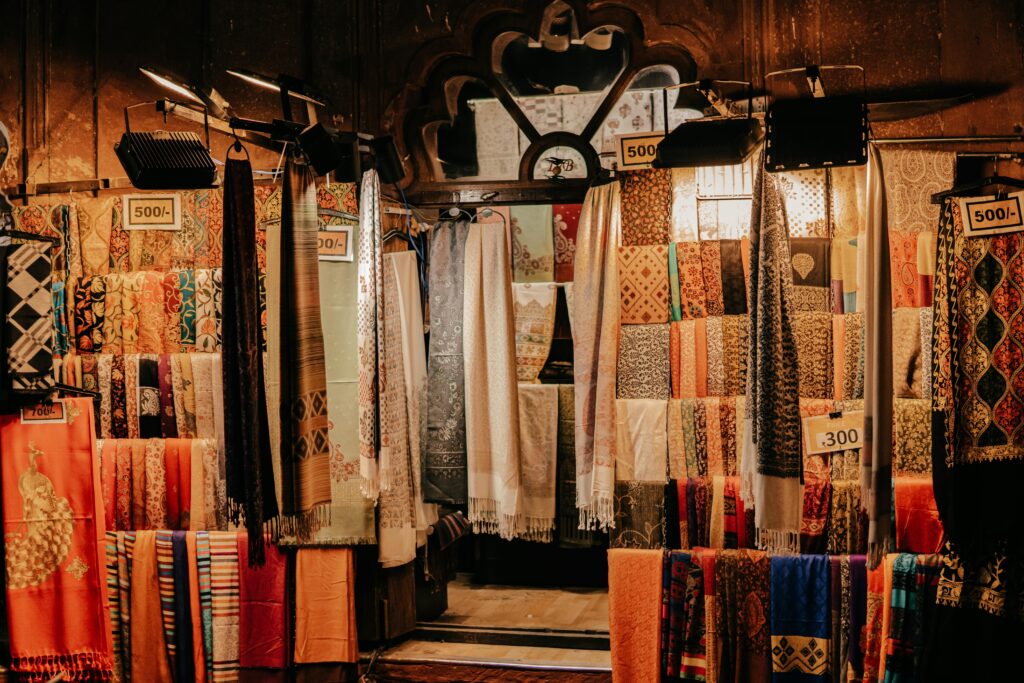
In the ever-changing world of fashion, versatility is a rare virtue. We often struggle to find clothing and accessories that are not just stylish but also suitable for various climates, events, and moods. Indian shawls, with their wide range of fabrics, weaves, and designs, elegantly rise to this challenge. They are more than just beautiful garments—they’re functional, adaptable, and timeless pieces that can be worn and gifted across seasons and occasions.
Let’s explore how Indian shawls weave their way into every season and every celebration.
Seasonal Versatility: A Shawl for Every Climate
One of the defining features of Indian shawls is their ability to adapt to different weather conditions. Whether you’re looking for warmth in winter or a light wrap on a breezy summer evening, there’s a shawl for that.
1. Winter: Embracing Warmth and Elegance
In colder months, Indian woolen shawls offer both comfort and sophistication:
- Pashmina shawls from Kashmir are world-renowned for their ability to provide warmth without the bulk. Lightweight yet incredibly insulating, these are ideal for chilly mornings and formal winter evenings.
- Wool and Angora shawls from Himachal Pradesh are soft, dense, and ideal for everyday use during winter.
- Kullu shawls, with their vibrant borders and thick weave, provide substantial warmth while adding a burst of color to dreary winter outfits.
These shawls are not just functional—they’re fashion-forward. Drape one over a sweater, jacket, or even a blazer, and it becomes a key winter accessory.
2. Summer: Light Layers and Breezy Comfort
Though shawls are often associated with winter, many Indian varieties are made for warmer weather:
- Cotton shawls from regions like Bengal and Gujarat are soft, breathable, and perfect for shielding from sun without overheating.
- Silk and Chanderi shawls, being lightweight and glossy, work beautifully during summer weddings or events where elegance is key but heavy fabrics are a burden.
Use them as a shoulder cover, scarf, or even a stylish headwrap during sunny days or breezy evenings.
3. Monsoon and Transitional Weather
During unpredictable weather or cooler evenings brought by rain, blended shawls (cotton-silk, wool-silk) offer a middle ground—light insulation without full coverage. These are great for travel, especially in diverse climates.
Occasion-Friendly: Elegance for Every Event
Indian shawls also shine when it comes to occasion versatility. Whether you’re dressing for a formal gathering or a casual outing, there’s a shawl that enhances the look without overwhelming it.
1. Festive & Religious Celebrations
During Indian festivals like Diwali, Durga Puja, Eid, and even Holi, shawls add a traditional touch:
- A Banarasi silk shawl or Phulkari embroidered wrap pairs perfectly with ethnic wear like sarees, lehengas, or kurtas.
- For religious rituals, simple cotton or woolen shawls in earthy tones offer modesty and respectfulness.
2. Weddings & Special Events
Indian shawls are a staple at weddings—not just for the bride and groom but for guests and family members:
- Zari-embroidered Pashminas, Kantha shawls, or Kani weaves elevate wedding attire with sophistication.
- Grooms often drape rich wool or silk shawls over their sherwanis, symbolizing tradition and elegance.
They’re also thoughtful wedding gifts—blending beauty, warmth, and sentiment.
3. Work & Formal Settings
Neutral-toned, finely woven shawls make elegant accessories in professional settings:
- Draped over a business suit, a plain cashmere or silk shawl offers understated grace.
- They double as wraps in air-conditioned offices or conference rooms, especially for women wearing formal Indian attire.
4. Travel & Casual Outings
For road trips, flights, or beachside evenings, shawls are the ultimate travel essential:
- Lightweight cotton shawls can be folded compactly and used as blankets or pillows.
- Printed or hand-blocked shawls from Rajasthan or Andhra add a boho-chic flair to casual jeans-and-top outfits.
They offer comfort, coverage, and style without effort.
A Cultural Constant Across Changing Times
From grandmother’s temples visits to Gen Z’s fashion-forward airport looks, shawls have seamlessly adapted across generations and styles. Their multi-utility is a testament to their design intelligence and cultural resilience.
Shawls aren’t just occasional accessories—they are seasonless, timeless, and endlessly adaptable. This makes them an essential part of every wardrobe and a brilliant choice for gifting.
4. Unisex and Universally Loved
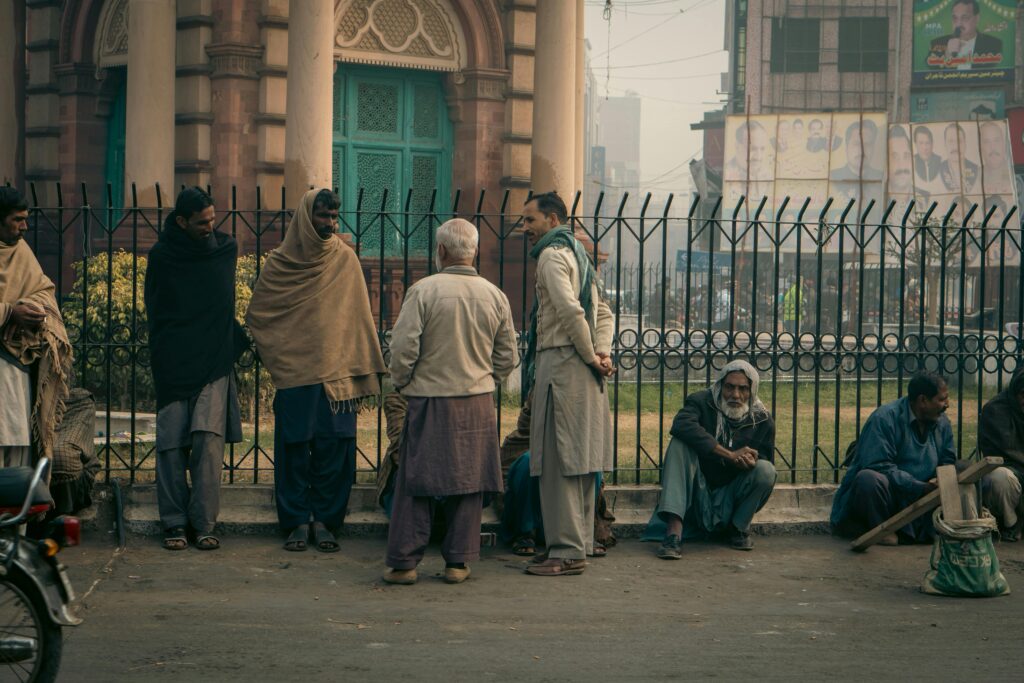
In today’s fashion-conscious world, inclusivity and versatility are more than just trends—they are essential values. Style is no longer defined by rigid categories of gender, age, or cultural background. Against this evolving backdrop, Indian shawls have emerged as timeless pieces that embody gender-neutral design and universal appeal.
Whether worn by men or women, by elders or youth, or by people from vastly different cultural landscapes, Indian shawls transcend boundaries. Their unisex nature and aesthetic flexibility make them a garment for everyone—and every occasion.
The History of Shared Elegance
Indian shawls have never been gender-exclusive. Historically, they were donned by emperors, saints, and queens alike. From the luxurious Pashmina shawls worn by Mughal nobility to the finely embroidered pieces gracing the shoulders of women in royal courts, these textiles were symbols of dignity and elegance—irrespective of gender.
Men wore shawls over sherwanis or achkans, while women used them as dupattas, veils, or body wraps. The weave was the same. The elegance was equal. Only the draping styles varied slightly.
Modern Shawls: Breaking Gender Barriers
Today, the fashion-forward crowd is reimagining shawls in gender-fluid ways. Designers, stylists, and influencers have begun highlighting shawls as:
- Statement accessories in menswear collections.
- Layering essentials for women’s everyday and formal looks.
- Functional travel companions for all genders.
- Cultural expressions in unisex wardrobes.
Their inherently neutral design—whether it’s the straight silhouette, the muted tone, or the abstract motif—lends itself effortlessly to every identity.
How Shawls Appeal to All Genders
1. Neutral Tones & Universal Motifs
Many Indian shawls are designed in earthy hues, pastels, or deep jewel tones—colors that work across genders. Patterns such as paisleys, florals, stripes, and geometric weaves are visually appealing to all, not just one demographic.
2. Functional Yet Fashionable
Everyone appreciates comfort, especially when it’s stylish:
- Men drape shawls over suits, kurtas, or Nehru jackets for weddings, events, or prayers.
- Women wear shawls with sarees, gowns, jeans, or suits for both casual and formal occasions.
- Gender-nonconforming individuals find freedom in styling shawls creatively—around the waist, across the shoulders, or even as a head wrap or poncho.
3. One Size Fits All
One of the key elements that makes shawls so inclusive is that they’re size-free. There’s no concern about body type, chest size, or fit issues. That makes them a hassle-free gift and wardrobe essential, no matter who you are shopping for.
Cultural and Global Acceptance
Indian shawls have found appreciation far beyond the Indian subcontinent. Their unisex appeal makes them especially popular in:
- Western markets, where they are used as scarves or stoles for both men and women.
- Spiritual and wellness communities, where shawls are worn during yoga, meditation, or rituals, regardless of gender.
- Fashion runways, where shawls are showcased as gender-fluid garments, often styled in androgynous collections.
This global embrace is proof that Indian shawls aren’t just unisex—they’re universal.
Inclusive Gifting: A Thoughtful Choice
When choosing a gift, especially for someone whose preferences or size you’re unsure about, a shawl becomes a perfect go-to. It shows consideration, sophistication, and cultural thoughtfulness without being tied to gender norms.
Imagine gifting:
- A sleek black wool shawl to a male colleague.
- A soft pastel Chanderi wrap to a friend.
- A richly woven Kalamkari piece to a non-binary artist.
No awkward sizing questions. No stereotype-based assumptions. Just pure, elegant inclusivity.
Emotional Universality: Beyond Fashion
It’s not just about how it looks—it’s about how it feels. The act of wrapping someone in a shawl is intimate and tender. It conveys warmth, care, and safety. These emotions are universal. They do not depend on the gender of the giver or receiver.
Whether worn by a monk in Ladakh, a grandmother in Punjab, a fashion blogger in Mumbai, or a tourist in Paris—the shawl speaks a language that everyone understands.
5. A Sustainable and Ethical Gift
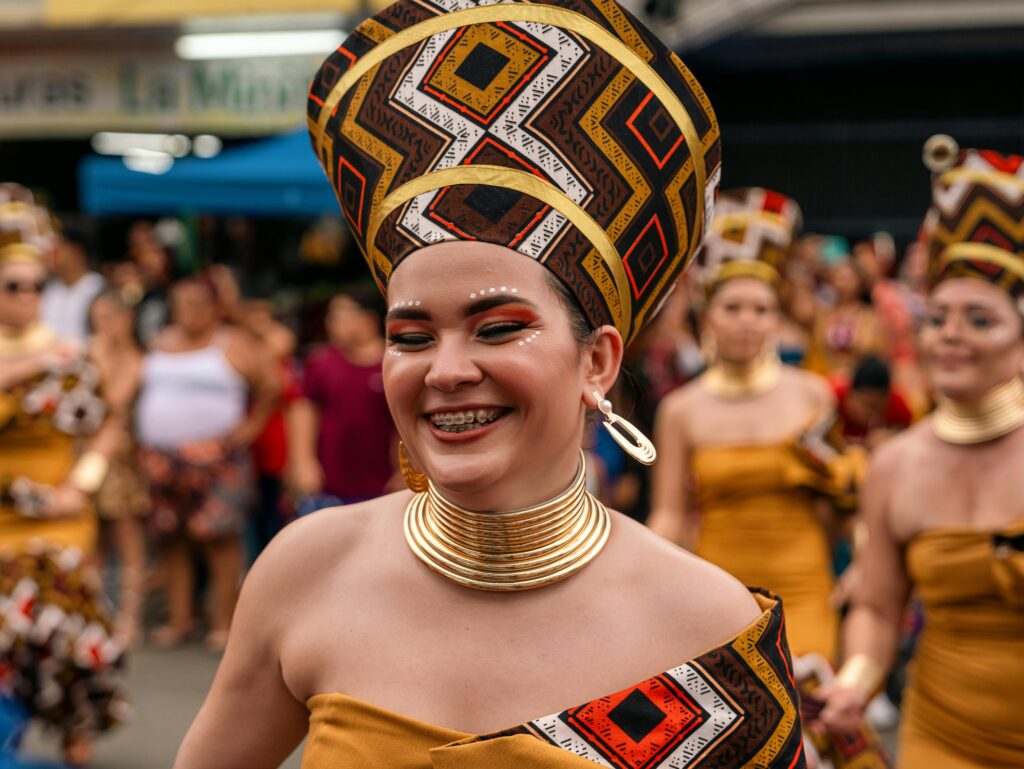
In a world increasingly driven by mindful consumption and ethical choices, the act of gifting has evolved beyond glamour and price tags. Today’s ideal gift is not just beautiful—it’s purposeful, responsibly made, and sustainable. Indian shawls, with their deep-rooted artisanal legacy and eco-conscious production, embody all these values and more.
When you choose to gift an Indian shawl, you’re not just giving a piece of fabric. You’re honoring craftsmanship, supporting livelihoods, and making a statement against fast fashion. Here’s why Indian shawls are not just elegant, but also an exceptionally sustainable and ethical gift.
1. Handwoven Heritage: A Human Touch in Every Thread
Most traditional Indian shawls are handcrafted on manual looms, not mass-produced in factories. The artisan’s hands guide every thread, ensuring that each piece is unique and personal.
- Pashmina shawls are made by skilled weavers in Kashmir using hand-spun yarn and wooden looms. One shawl can take weeks or even months to complete.
- Kantha shawls from Bengal use hand-stitched embroidery, often repurposing old saris into beautiful, layered wraps.
- Wool and cotton shawls from Himachal and Gujarat follow time-honored techniques passed down through generations.
By gifting a handwoven shawl, you celebrate not just the final product but the human labor, patience, and ancestral knowledge behind it.
2. Low Environmental Impact: A Friend to the Earth
Unlike synthetic, machine-made garments that require vast energy resources and often release microplastics, Indian shawls have a minimal ecological footprint:
- Natural fibers like wool, cotton, and silk are biodegradable and renewable.
- Dyeing processes in traditional shawl-making often use plant-based or natural dyes, reducing chemical pollution.
- Many shawls are woven in off-grid rural settings, using minimal electricity and water.
- By avoiding synthetic materials, these shawls are breathable, non-toxic, and skin-friendly.
This slow, low-waste process ensures that a single shawl lasts decades, making it a true antidote to disposable fashion.
3. Supporting Local Artisans and Rural Economies
When you buy or gift a traditionally woven shawl, you contribute directly to the livelihoods of artisans—many of whom live in marginalized rural areas.
- In regions like Ladakh, Kashmir, Kutch, Bengal, and Himachal, weaving is more than a job—it is a cultural identity.
- Shawl-making provides employment to women, elderly artisans, and entire communities, often keeping families economically stable.
- Many artisan clusters operate through cooperatives or NGOs that ensure fair wages, safe working conditions, and recognition for the weavers.
Unlike commercial brands, your purchase here supports a real person—not a faceless corporation. It keeps the looms of rural India running, preserving not just economies but culture itself.
4. A Stand Against Fast Fashion
The fashion industry is the second-largest polluter in the world, thanks to mass production, synthetic fibers, and cheap labor. Gifting an Indian shawl is a conscious way to say no to waste, exploitation, and throwaway culture.
- Instead of multiple seasonal outfits that end up in landfills, a handwoven shawl is a one-time, timeless investment.
- The design doesn’t chase trends—it celebrates heritage, making it eternally relevant.
- Owning or gifting a shawl encourages the recipient to care, repair, and rewear—core principles of sustainable fashion.
5. Mindful Gifting: Thought Over Trend
Sustainability is not just about the planet—it’s about how we live and give. A handwoven Indian shawl reflects intention and thoughtfulness:
- It’s not picked last-minute; it’s curated with care.
- It doesn’t scream luxury; it whispers quality and depth.
- It suits any age, gender, and personality, making it a universally appropriate gift.
When you give someone a shawl, you’re giving them more than utility—you’re gifting them a philosophy: to live slow, to value stories, and to choose quality over quantity.
6. Longevity and Legacy
The ultimate test of sustainability is how long a product lasts. Indian shawls, when cared for properly, can last a lifetime—and even be passed down generations.
- Their timeless beauty means they never go out of fashion.
- The quality of material and craftsmanship ensures they don’t tear, fade, or fray easily.
- With stories woven into each thread, these shawls often become heirlooms, carrying emotional value that grows with time.
Few gifts can claim such lasting significance.
6. Customizable and Personal
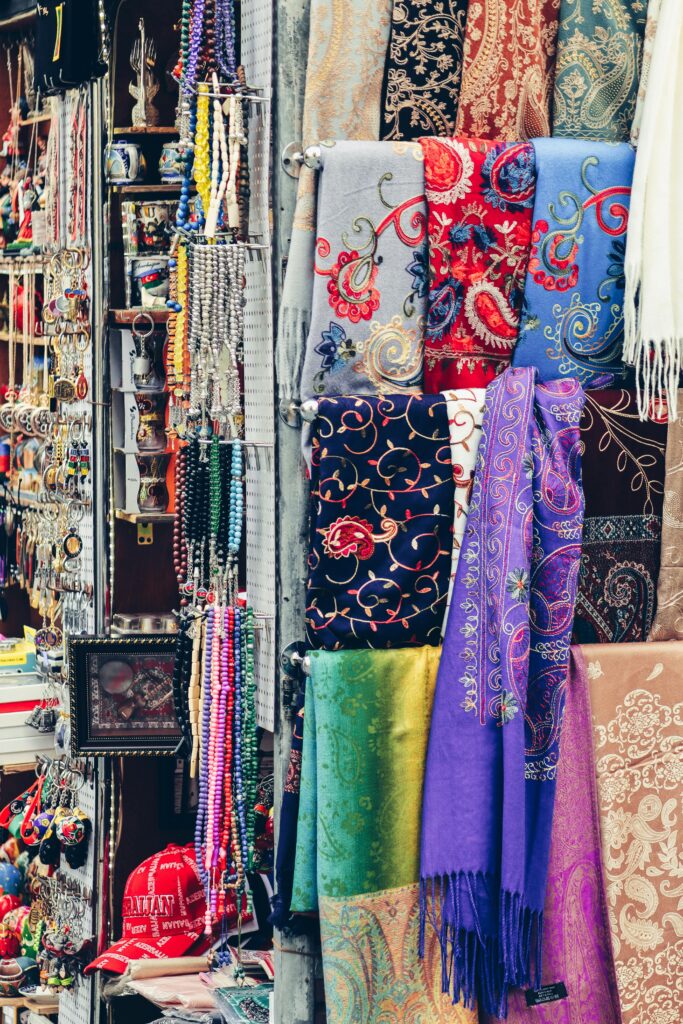
In a world saturated with mass-produced goods and impersonal gift cards, personalization has become a rare but cherished quality. The best gifts are those that feel like they were chosen, not just bought—gifts that speak directly to the heart, reflect a relationship, and evoke a sense of identity.
Among such meaningful tokens, Indian shawls stand out for their deeply customizable nature. Whether you’re selecting a design, a fabric, or an embroidery style, shawls offer endless ways to make the gesture uniquely yours. They’re not just beautiful accessories—they’re expressions of care, culture, and individuality.
1. A Canvas of Possibilities: Design Meets Intention
Every Indian shawl is a story waiting to be told—and you get to decide what story it tells.
Personalized by Region and Weave
Each region in India has its own signature weave or technique, offering you a culturally meaningful option:
- Choose a Pashmina for someone who appreciates subtle luxury.
- Opt for a Kantha embroidered shawl to celebrate a love for handmade artistry.
- Gift a Jamdani cotton shawl to someone who enjoys breathable elegance.
- Pick a Kalamkari or Ajrakh block-printed shawl for those who adore bold, artistic patterns.
Your choice of regional style can reflect the receiver’s personality, origin, or even shared memories.
Choice of Colors and Motifs
Whether it’s deep jewel tones for a regal vibe, pastels for softness, or earthy neutrals for minimalists, shawls offer a spectrum of hues and designs to match the recipient’s taste:
- Florals for a romantic.
- Geometrics for the modern minimalist.
- Traditional paisleys for the culturally rooted.
You can match their wardrobe, favorite colors, or even align it with a specific occasion like a wedding, birthday, or festival.
2. Embroidery, Monograms & Bespoke Additions
Personalization doesn’t stop at choosing a fabric. Indian shawls can be customized with embroidery, initials, or symbolic motifs, making them one-of-a-kind:
- Add the recipient’s monogram or initials stitched into the corner of a silk or wool shawl for a luxurious personal touch.
- Commission a family crest, religious symbol, or a meaningful phrase to be woven or embroidered into the design.
- In some regions, artisans even offer to recreate handwritten notes or designs as part of the shawl’s motif.
Such bespoke detailing transforms a shawl from a gift into a keepsake.
3. Gifting by Occasion: Tailoring the Emotion
Shawls can be selected and styled to suit virtually any occasion, making them emotionally relevant gifts:
Weddings & Anniversaries
- A Pashmina with delicate zari work is an ideal bridal gift or anniversary token.
- Matching shawls for a couple with their names or wedding date embroidered can become an enduring memory.
Milestones & Achievements
- Celebrate retirements, graduations, or promotions with a shawl that reflects dignity and recognition.
- Choose colors that represent success—like golds, reds, or royal blues.
Spiritual & Personal Moments
- For housewarmings, baby showers, or even bereavements, a soft cotton or woolen shawl can carry comfort and peace.
- Customizing with mantras or blessings makes it even more touching.
4. Thoughtful Packaging and Presentation
The personal touch extends even beyond the fabric. A customizable shawl can be:
- Packaged in hand-painted or eco-friendly boxes
- Accompanied by a handwritten note or scroll describing the shawl’s origin
- Wrapped in fabric pouches made from leftover material (a nod to zero-waste philosophy)
Some premium brands even offer “gift stories”, where the buyer can share the recipient’s personality and get a tailor-made suggestion with a narrative card to match.
This kind of attention to detail elevates the entire gifting experience, making it memorable even before the shawl is unwrapped.
5. Emotional Customization: A Legacy in the Making
Beyond colors and crafts, the real magic lies in how personalized shawls become emotionally layered:
- A daughter wears her mother’s customized wedding shawl during her own ceremony.
- A teacher treasures the monogrammed woolen wrap given by a grateful student.
- A friend recalls your bond every time they wrap themselves in the scarf you gave them during a tough time.
These aren’t just garments—they become emblems of love, memory, and presence.
6. Accessibility of Personalization
Thanks to growing awareness and online accessibility, customizing a shawl is no longer limited to luxury buyers. Today:
- Many artisan collectives offer direct-to-consumer personalization services.
- Small boutiques and e-commerce platforms allow you to choose colors, add initials, or commission embroidery.
- Even on a modest budget, you can add a personal touch with packaging, tags, or themed designs.
This makes the idea of a personalized shawl not only emotionally rich but economically inclusive as well.
7. Elegant Without Being Extravagant
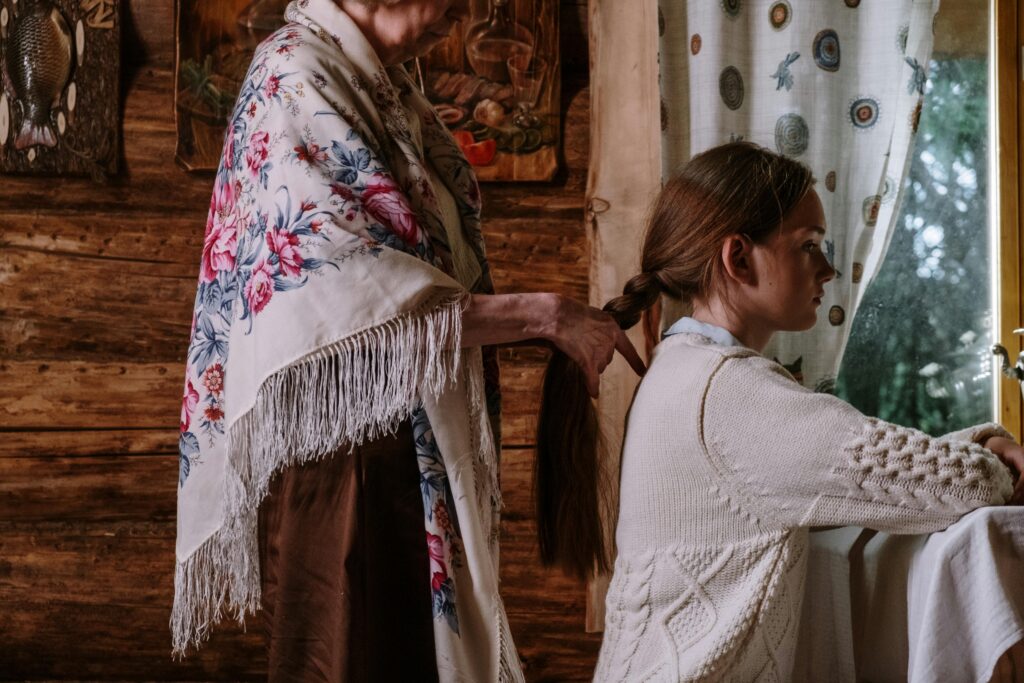
In a time when extravagance often overshadows authenticity, finding a gift or wardrobe essential that exudes grace without being gaudy is increasingly rare. Indian shawls beautifully meet this need—they embody understated luxury, cultural richness, and refined elegance, all without screaming for attention.
They don’t need glitter to shine. They don’t chase trends to stay relevant. Indian shawls speak in whispers of heritage, craftsmanship, and timeless design, making them elegant without being extravagant—a true emblem of quiet sophistication.
1. The Art of Understated Luxury
True elegance isn’t always about opulence. It lies in the details, the texture, the story—all of which Indian shawls offer in abundance.
Quality Over Flash
- A finely woven Pashmina doesn’t need embellishment to impress—its softness and featherlight warmth are enough.
- Chanderi silk-cotton blends shimmer subtly under light, offering a glow that feels organic, not artificial.
- The charm of a hand-embroidered Kantha shawl lies in its stitches—each telling a personal, handcrafted story.
These are not accessories meant to dazzle with glitter. They captivate through finesse, not flash.
2. Affordable to Premium: Grace at Every Price Point
Elegance doesn’t have to be expensive. One of the most empowering aspects of Indian shawls is their wide price accessibility without compromising on style or substance.
- Handloom cotton or woolen shawls from states like Himachal Pradesh, Gujarat, or Bengal are budget-friendly and incredibly stylish.
- Blended varieties (cotton-silk, wool-silk) offer a sophisticated appearance without premium costs.
- Even entry-level Pashmina blends retain the luxurious texture and warmth of their pure counterparts.
This means you can gift or wear a shawl that feels regal and looks refined without straining your wallet. The elegance is in the craftsmanship, not just the cost.
3. The Power of Simplicity
Minimalist fashion is celebrated today more than ever. Indian shawls align perfectly with this ethos.
- A solid-colored shawl with a clean border pairs effortlessly with both traditional and Western attire.
- Light embroidery or subtle prints allow the shawl to elevate any outfit without overwhelming it.
- The drape itself becomes the design—soft folds, the way it catches light, the silhouette it creates.
The lack of loud branding or over-decoration makes Indian shawls versatile and timeless—ideal for people who value quiet class over loud statements.
4. Versatility That Enhances Elegance
Indian shawls are the very definition of “less is more” when it comes to style:
- Drape it over a saree for a wedding, or wear it as a scarf with a trench coat.
- Use it to add warmth on a flight or as a wrap during a formal dinner.
- Let it serve as a modest shoulder cover at religious functions or a pop of pattern over neutral outfits.
One shawl, many occasions—this kind of versatility is the true hallmark of elegant design.
5. Gifting That Feels Rich Without Being Over-the-Top
When you gift someone a traditional Indian shawl, you’re not giving them a trendy product—they’re receiving a piece of culture, carefully chosen for their taste and personality.
- It reflects thought, but not showiness.
- It offers beauty, but with practicality.
- It makes the recipient feel valued, not indulged.
Unlike expensive jewelry or tech gifts, a shawl carries emotion without excess, making it appropriate for colleagues, elders, mentors, friends—or even someone you admire from afar.
6. Aesthetic Sophistication in the Details
Every Indian shawl has its own language of elegance:
- The fine weaving in a Kani shawl.
- The geometric harmony in a Kullu design.
- The freehand block prints in an Ajrakh piece.
- The hand-tied tassels, the clean hem, the symmetrical drape.
These small touches turn something functional into something artistic—proving that true style lives in the details, not the drama.
7. Cultural Prestige, Not Price Prestige
Indian shawls carry a cultural richness that no price tag can define. They speak of:
- Artisan communities,
- Generations of tradition,
- Sustainable practices,
- Stories of devotion and dedication.
When you wear or gift one, you’re inviting conversation, connection, and admiration—not for how much you spent, but for how meaningfully you chose.
Conclusion
Gifting gracefully is about thought, meaning, and lasting impressions—and Indian shawls offer just that. In a fast-paced world, they are a reminder of the slow, soulful artistry that India is known for. The next time you’re looking for a present that combines beauty, culture, and heart—wrap your thoughts in an Indian shawl.
